RTP 600 Series Compounds
This data provides comparative information on the shielding performance of standard RTP Company acrylonitrile butadiene styrene compounds using various combinations of additives and loading levels.
Instead of off-the-shelf solutions, RTP Company routinely develops specialty compounds with a precise combination of properties such as conductivity, flame retardance, structural reinforcement, color, and wear resistance to meet your exact application requirements.
RTP 600 Series
Acrylonitrile Butadiene Strene (ABS) Compounds
The ABS three monomer system can be tailored to yield a good balance of properties. Basically, styrene contributes ease of processing characteristics, acrylonitrile imparts chemical resistance and increased surface hardness, and the butadiene contributes impact strength and overall toughness. ABS is considered the best of the styrenic family. It is hard, tough and rigid.
ABS is severely attacked by some solvents. Prolonged exposure to aromatic solvents, ketones and esters should be avoided. This poor resistance to solvents does allow solvent bonding as a means of assembly.
Carbon Fiber Products
- Reinforcing
- Highest strength/modulus properties of the common shielding additives
- Lowest cost of the common shielding additives
- Low shielding performance
ESD 681
Carbon Fiber 10%
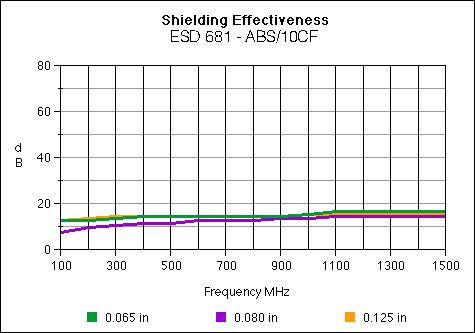
ESD 683
Carbon Fiber 20%
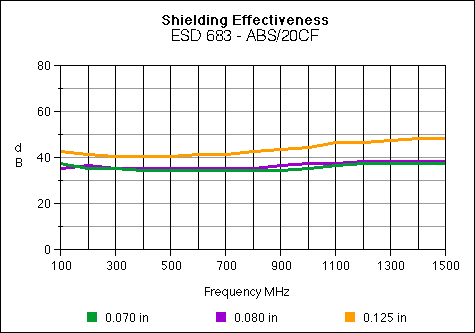
ESD 685
Carbon Fiber 30%
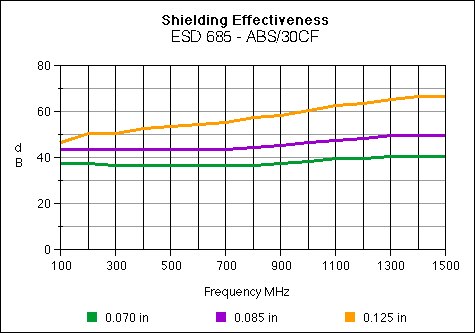
Stainless Steel Fiber Products
- Non-reinforcing
- Minimal effect on neat resin properties
- Similar mold shrinkage to neat resin
- Good shielding-to-cost performance
- Best colorability of the common shielding additives
EMI 660.5
Stainless Steel 5%
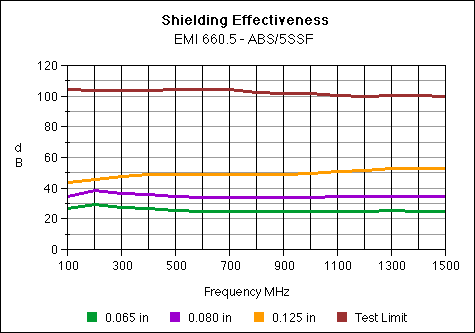
EMI 661
Stainless Steel 10%
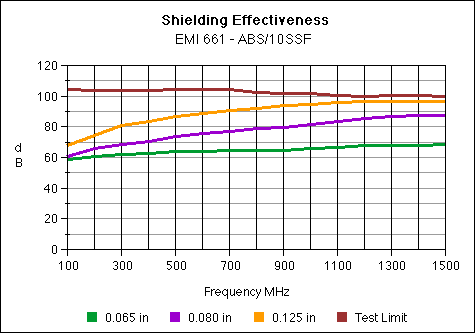
EMI 662
Stainless Steel 15%
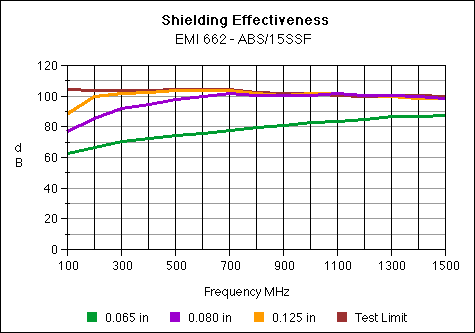
ASTM D4935: Standard Test Method for Measuring the Electromagnetic Shielding Effectiveness of Planar Materials
This test method provides a procedure for measuring the electromagnetic (EM) shielding effectiveness (SE) of a material due to a plane-wave, far-field EM wave. The test utilizes a coaxial transmission line to determine the shielding effectiveness of a given material. The test method is valid for a frequency range of 30 MHz to 1.5 GHz. Various thicknesses and types of materials can be tested to acquire a relative ranking of shielding effectiveness.
Supporting Product Information
Chemical Resistance
Information on resin resistance to chemical and environmental exposure.
RTP Company Nomenclature
Guide to the identification system used for RTP Company products.
EMI Primer
The nuts and bolts of EMI and how thermoplastics can function as a shield.
No information supplied by RTP Company constitutes a warranty regarding product performance or use. Any information regarding performance or use is only offered as suggestion for investigation for use, based upon RTP Company or other customer experience. RTP Company makes no warranties, expressed or implied, concerning the suitability or fitness of any of its products for any particular purpose. It is the responsibility of the customer to determine that the product is safe, lawful and technically suitable for the intended use. The disclosure of information herein is not a license to operate under, or a recommendation to infringe any patents.




